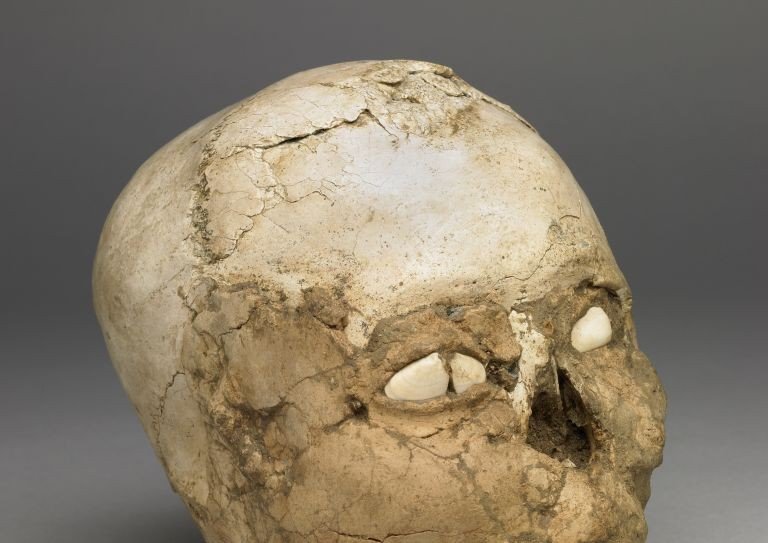3D Reconstruction Of 9,500-Year-Old Jericho Skull Reveals Skull And Face Hidden Under The Plaster
The face of a man, whose skull partly covered by plaster and found near Jericho in the 1950s, is now reconstructed.
A 3D-printed reproduction of the original cranium and a reconstruction of the person’s face, both products of new research into the ancient artwork, is the centerpiece of a new exhibition entitled “The Jericho Skull: From person to ancestor and back again” at the British Museum.

The skull named “Jericho Skull” belonged to a man who lived 9,500 years ago in Jericho, near the Jordan River in the West Bank.
The skull was one of seven discovered near Jericho by Kathleen Kenyon in 1953, all of which are believed to have served as part of a Neolithic ritual relating to ancestor worship, reports “The Times of Israel”.
Other examples are on display in the UK, Canada and Jordan, and at East Jerusalem’s Rockefeller Museum.
The plastered skulls found in the Levant, at sites in modern-day Jordan, Israel, Syria and the West Bank, are considered some of the earliest examples of sculptured portraiture.
The digital reproductions are the culmination of new high-tech examinations of the artifact. Micro-CT imaging allowed scientists to examine areas of the head previously unseen.
During his childhood, the man’s skull was bound and reshaped, and after his death the skull was cut open and filled with soil to support the plaster, a fact previously unobserved.
The CT scan provided imagery for a 3D model, from which researchers reconstructed the man’s face.
The museum’s exhibition closes on February 19, and for those unable to make the trip to London to see the exhibit, the museum uploaded an interactive digital model of the skull.



 Creators of mankind
Creators of mankind Description of “Tall white aliens”
Description of “Tall white aliens” Where they came from?
Where they came from? About hostile civilizations
About hostile civilizations The war for the Earth
The war for the Earth “Tall white aliens” about eternal life
“Tall white aliens” about eternal life Video: “Nordic aliens”
Video: “Nordic aliens” Aliens
Aliens Alien encounters
Alien encounters The aliens base
The aliens base UFO
UFO Technology UFO
Technology UFO Underground civilization
Underground civilization Ancient alien artifacts
Ancient alien artifacts Military and UFO
Military and UFO Mysteries and hypotheses
Mysteries and hypotheses Scientific facts
Scientific facts


















